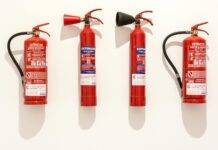
Introduction
Workplace Safety Quiz : A safe work environment not only prevents accidents and injuries but also boosts productivity and employee morale. One effective way to reinforce safety knowledge among employees is through workplace safety quizzes. In this article, we will delve into the significance of workplace safety quizzes and provide you with a comprehensive set of quiz questions and answers to test and enhance your knowledge of safety protocols in different work settings.
Why Workplace Safety Quizzes Matter
1: Enhancing Knowledge Retention
Workplace safety quizzes are a proven tool for enhancing knowledge retention. Instead of dry, monotonous training sessions, quizzes present information in an interactive and engaging manner. By testing employees’ understanding of safety practices, it helps reinforce essential information, making it more likely to stick with them.
2: Identifying Knowledge Gaps
Regular safety quizzes also help identify knowledge gaps among employees. This enables employers to focus on specific areas where further training and education might be required. Addressing these gaps promptly can significantly reduce the likelihood of accidents and injuries.
3: Encouraging Accountability
By taking safety quizzes, employees become more accountable for their own safety as well as the safety of their colleagues. When they realize the importance of adhering to safety guidelines, they are more likely to make conscious efforts to maintain a secure working environment.
4: Fostering a Safety Culture
Workplace safety quizzes play a crucial role in fostering a safety-first culture within an organization. When employees consistently engage in safety-related activities, it creates a culture where safety becomes a top priority for everyone.
Important Safety Quiz Questions and Answers
General Safety Knowledge
Q1: What does OSHA stand for?
A) Occupational Safety and Health Administration
B) Occupational Safety and Hazard Assessment
C) Occupational Security and Hazard Association
D) Office of Safety and Health Assessment
Answer: A) Occupational Safety and Health Administration
Q2: What is the purpose of an SDS (Safety Data Sheet)?
A) To provide instructions for using office equipment
B) To communicate hazards associated with chemicals
C) To record employee attendance
D) To schedule safety meetings
Answer: B) To communicate hazards associated with chemicals
Fire Safety
Q3: In the event of a fire, what does the acronym “PASS” stand for when using a fire extinguisher?
A) Pull, Aim, Squeeze, Sweep
B) Point, Assess, Spray, Shout
C) Push, Activate, Spray, Shove
D) Pull, Activate, Shoot, Swivel
Answer: A) Pull, Aim, Squeeze, Sweep
Q4: What is the first step to take when you discover a fire?
A) Call your supervisor
B) Evacuate the building immediately
C) Attempt to extinguish the fire yourself
D) Disconnect all electrical equipment
Answer: B) Evacuate the building immediately
Ergonomics and Body Mechanics
Q5: Which of the following is an example of practicing good ergonomics?
A) Using a chair with poor lumbar support
B) Placing the computer monitor at eye level
C) Keeping the mouse far from the keyboard
D) Using the laptop on a soft surface like a bed
Answer: B) Placing the computer monitor at eye level
Q6: How should you lift heavy objects to avoid injury?
A) Keep your back straight and bend at the waist
B) Bend your back as much as possible to distribute the weight
C) Lift with your back while twisting your body
D) Bend your knees and use your legs to lift
Answer: D) Bend your knees and use your legs to lift
Electrical Safety
Q7: What should you do if you see a frayed electrical cord?
A) Ignore it and continue working
B) Cover it with tape
C) Replace it immediately
D) Report it to your supervisor
Answer: C) Replace it immediately
Q8: What type of fire extinguisher should be used on an electrical fire?
A) Water extinguisher
B) Foam extinguisher
C) CO2 extinguisher
D) Powder extinguisher
Answer: C) CO2 extinguisher
Conclusion
In conclusion, workplace safety quizzes are an invaluable tool for reinforcing safety knowledge, identifying knowledge gaps, encouraging accountability, and fostering a safety-first culture within organizations. By regularly testing employees’ understanding of safety protocols, employers can create a safer and more secure working environment. It is essential to remember that workplace safety is a shared responsibility, and everyone must be proactive in maintaining a safe workplace.
FAQs
Q1: How often should workplace safety quizzes be conducted?
A: The frequency of workplace safety quizzes can vary depending on the organization’s policies and industry standards. However, conducting quizzes quarterly or semi-annually is a common practice.
Q2: Are workplace safety quizzes mandatory?
A: Yes, workplace safety quizzes are often mandatory, especially in high-risk industries. They help ensure that employees are knowledgeable about safety practices.
Q3: Can workplace safety quizzes be tailored to specific job roles?
A: Absolutely! Tailoring quizzes to specific job roles allows employees to focus on safety aspects that are most relevant to their tasks.
Q4: Are there penalties for employees who perform poorly in safety quizzes?
A: The purpose of safety quizzes is not to penalize employees but to identify areas where further training may be needed. However, some organizations might use quizzes as part of a broader safety performance evaluation.
Q5: Can workplace safety quizzes be conducted online?
A: Yes, conducting safety quizzes online is a convenient and efficient way to reach a large number of employees, especially in organizations with multiple locations.

























Please provide regularly, by attending this safety quizzes we are gaining more knowledge than we studied the theary part
Definitely
Definitely!